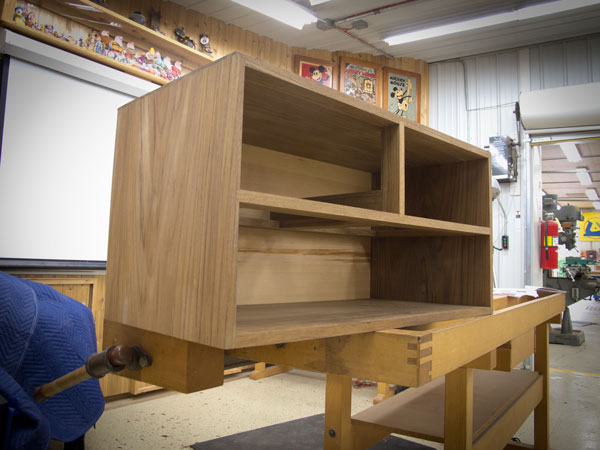We may receive a commission when you use our affiliate links. However, this does not impact our recommendations.
While I like and appreciate strict reproductions, I’ve always preferred to design my own stuff.
How do I design a piece? In the only way I know how. It’s not easy. There are no formulas or rules or ratios. It is by a process I call “saturation and feedback.”
Step 1: Absorb everything you can about the form and the style you are building in.
Step 2: Draw something that looks like it was built during that period, but is not a reproduction.
Today I tried to teach a class of 12 students at the Marc Adams School of Woodworking how to design a campaign chest. So we spent the morning looking at tons of photos of campaign chests, from the typical to the outliers. At first I pointed out what I saw in each photo. What I liked. What I didn’t.
After 20 or 30 chests, I started asking the students what they liked and didn’t like about each chest I flashed up on the screen. Their opinions weren’t always the same as mine (a good thing!), but they were developing their eyes to understand the language of the “campaign chest” as it was built from 1740 to 1914.
Then I asked them to do three things:
1. Immediately sketch a rough drawing of a chest they’d like to build.
2. Review all the 58 chests we’d looked at and study the details again – then make another quick sketch of a chest they’d like to build.
3. Make a 3-view drawing of a nice-looking chest that they could build with the wood they had brought to the class.
I was surprised how many of them picked up on the language of these chests. There is a subtle interplay behind the drawer graduations, the different sizes of the two case pieces and the base. It’s not easy to get all three things working, but most of them managed to hit the nail on the head on their first attempt.
Now that we have 12 different designs for campaign chests, we have to actually build 12 different chests in four days. So stay tuned.
Want to play the home game? Download the pdf here that showcases the 58 chests we examined this morning. Then try to draw your own chest.
— Christopher Schwarz
P.S. Read other articles I’ve written about campaign chests here.
Here are some supplies and tools we find essential in our everyday work around the shop. We may receive a commission from sales referred by our links; however, we have carefully selected these products for their usefulness and quality.









Chris,
I went through the exercise just as you suggested and found, that 40+ years after kindergarten, I still can’t draw a straight line with a ruler – or a coffee stirrer. Having said that, I did glean a few things from the exercise. The Golden Ration applies. I was trying to tease out the statement, “There is a subtle interplay behind the drawer graduations, the different sizes of the two case pieces and the base…” and I found that between the Ratio and some good ol’ fashioned eye-balling, one could get a pretty appealing set of chest-like objects on paper, straight lines or otherwise. If I can scrounge up the proper materials, coffee stirrers just wont cut it, I will make a set of ratio dividers and see what they tell me with respect to the collection of pictures you kindly provided.
I would suggest that your methodology is as good as any other way to teach Design, and some ways far better for those that have not had the opportunity to attend institutions of “higher learning.”
Thanks again!
Albert A Rasch
FOB Shank, Afghanistan
Interesting your 56 chests only showed a couple with three drawers across the top level. The one my wife has , has been in the family since the 1820’s has 3 across similar to #50/51 does it also have a secret drawer?
Thanks for putting this out there. Once again I am blown away by how generous you are with your hard-earned knowledge. Your blogs and the the work you publish are inspiring to people who celebrate awesomeness.
If you wouldn’t mind sharing (more), what is the resource for the slides that had written commentary on the pieces. I could geek out on that stuff hard. Like lose my job and mortgage hard.
Chris,
That sounds like a really fun class. Great project idea and design idea.
I’m curious what kinds of details were “features or flaws”. The size and
shape and intended purpose looks very similar but the details can really
make some of these pieces stand out.
I really enjoyed the gallery of photos too. Can’t wait for some more pictures
of your students work. Very inspiring.
Bob in Minnesota